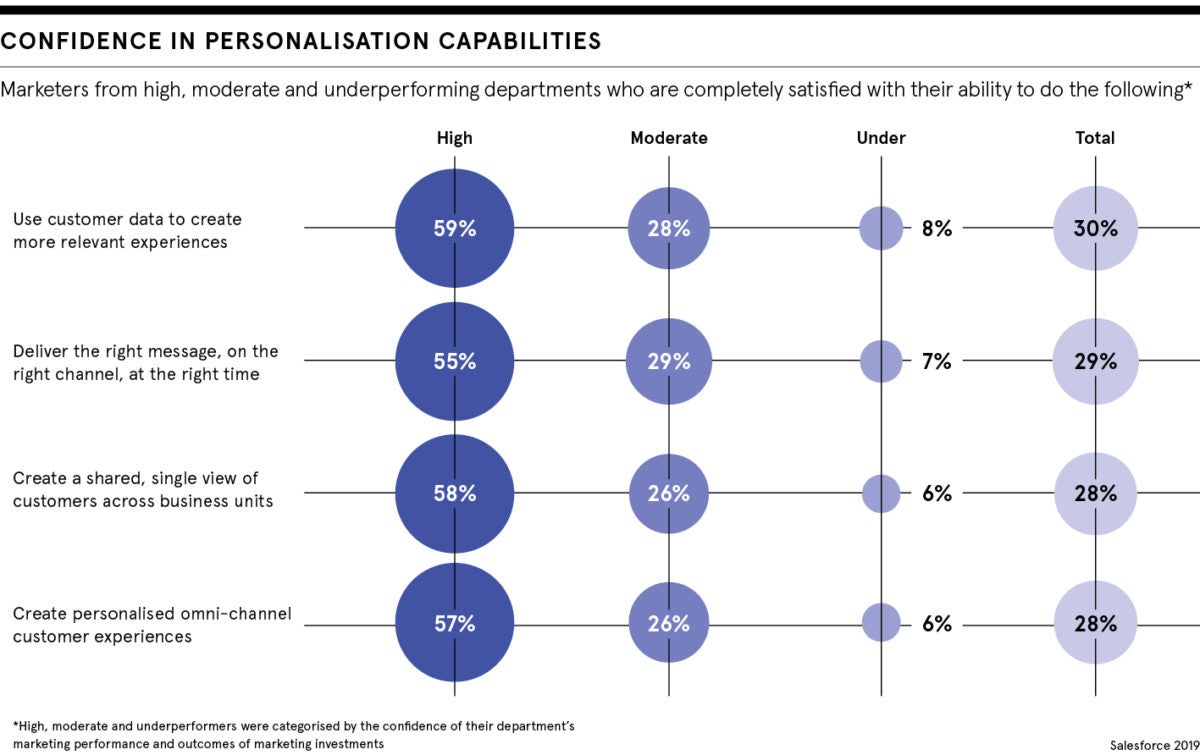Truly understanding your customer is the holy grail of those at the frontiers of personalisation. Unparalleled amounts of customer data enable machines to hold up a mirror to our preferences, understand our needs and sell us something relevant. Mass customisation can now reach new heights at a time when choice is infinite, especially online.
“Personalisation 2.0 or, as some call it, hyper-personalisation, creates an ideal paradigm where we’re now able to move away from just selling people something, to being able to anticipate a very discrete need, and make a highly relevant and curated offer at an exact time,” explains Utpal Kaul, head of new product incubation at CWT.
What is powering hyper-personalisation?
Over the last few years, huge advances in artificial intelligence (AI), machine and deep-learning, as well as algorithm neural networks, have made this possible. However, the vast majority of brands haven’t even reached the hyper-personalisation stage.
“In fact, most are still at square one. Those companies that claim to have implemented some form of personalisation still do so in a very rudimentary way,” says Hugh Fletcher, global head of consultancy at Wunderman Thompson Commerce.
“The next phase must go beyond a reactive personalisation of content based on what a consumer has done, to a proactive and anticipatory science.”
Amazon has long talked about it. This is the new frontier, which is less about selling us stuff and more about complementing our life experiences, involving authentic, one-to-one engagement, without appearing spooky, intrusive or annoying. “The next level of personalisation shouldn’t always seem personalised, instead it should be fortuitous,” says DuBose Cole, head of strategy at VaynerMedia London.
“Personalisation 2.0 moves beyond personalising the message, to additionally personalising the context in which it engages a consumer. Like a good waiter, this technology and content must rapidly not just know our tastes, but be there when needed and be invisible when it isn’t.”
A key challenge will be marrying advanced tools with the need to protect consumer privacy yet promote innovation. This is a delicate balance and in a post-General Data Protection Regulation world there are still real fears. “Walking this line will be tricky, but personalised experiences must give consumers control over their data for any brand that wants to be successful,” says Niall Habba, managing director of the Telemarketing Company.
Is it time for empathetic AI?
Predictive algorithms and data analytics are helping this next phase, along with a wider net of touchpoints from in-store and real-time data to call centres, social media and online purchase history. They’re assisting in building a 360-degree view of the customer.
“What people are looking for is that corner-shop owner, someone who knows you well enough to ensure you get what you want every time without knowing about your entire private life,” explains Antione Boatwright, chief technology officer at Reed & Mackay.
Another frontier is also in the offing. When Jeff Bezos and Amazon patented tech allowing Alexa devices to detect emotional change via voice analysis, they hinted at the future. If you’re sick or sad, machines could soon offer cold remedy adverts or retail therapy. “Empathy is king when re-imagining the experiences you would like your customers to witness,” says Robin Collyer, senior director of analytics at Pegasystems.
Like a good waiter, this tech and content must rapidly not just know our tastes, but be there when needed and be invisible when it isn’t
Yet empathetic AI is still a long way off. Technology that senses moods and peculiar situations doesn’t exist yet. Therefore, the next best thing will involve melding human insight with hyper-personalisation and curated content.
“We humans are astonishingly adept at sensing things, not just stark differences between good and bad moods, but even highly nuanced things like sarcasm, body language, hesitation or eagerness. Humans add enormous value and this is where we can complement technology,” says Kaul.
There’s no doubt that keeping a human connection will be important for any new frontiers in personalisation. Sense-checking what’s going in and coming out of machines, and using human intuition to interpret results, could be crucial, since real people embody trust and boundaries. There’s still a long way to go before technology can fully replicate human interaction flawlessly.
“Brands that hand more of this off to predictive algorithms and black boxes will be the ones to lose a true connection with their customers,” says Tim Bond, head of insight at the Data & Marketing Association.
Beware of the hyper-personalised bubble
Delivering new levels of personalisation involves the right stakeholders and processes focused on serving this at scale. New frontiers reach beyond digital marketing and into products, services and content.
“Companies must reconfigure the whole customer experience to align with new technology and train staff for this operational and behavioural change,” says Pat Geary, chief marketing officer at Blue Prism.

There are also concerns about how new levels of hyper-personalisation could shrink our echo chambers and spheres of interest. This poses a risk, putting customers in a bubble, limiting the scope for surprise or creativity, as well as the opportunity for random discovery or the joy of serendipity.
“Many have observed over the past few years that there’s a global issue concerning increased isolationism and introversion. The more progressive businesses would not want to further that and could play a positive role in countering it with these increasingly powerful technologies and tools,” says Adam Powers, chief experience officer at Tribal Worldwide London. There’s a thought.
What is powering hyper-personalisation?
Is it time for empathetic AI?
Beware of the hyper-personalised bubble

